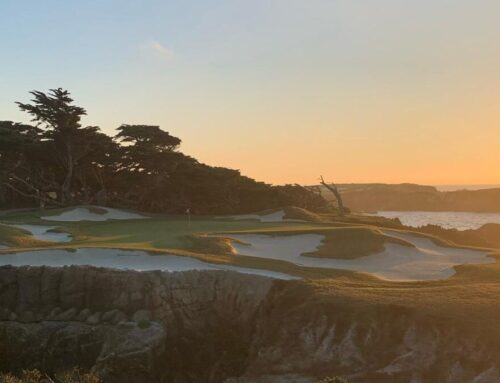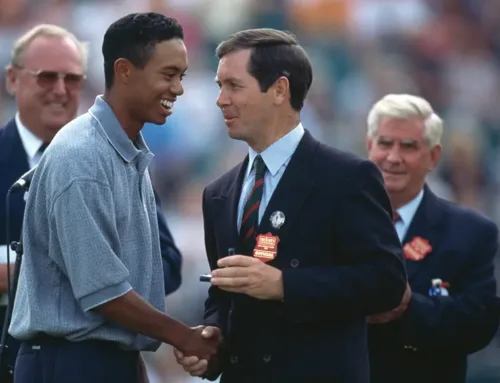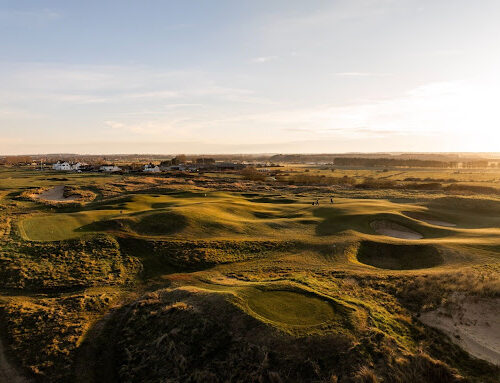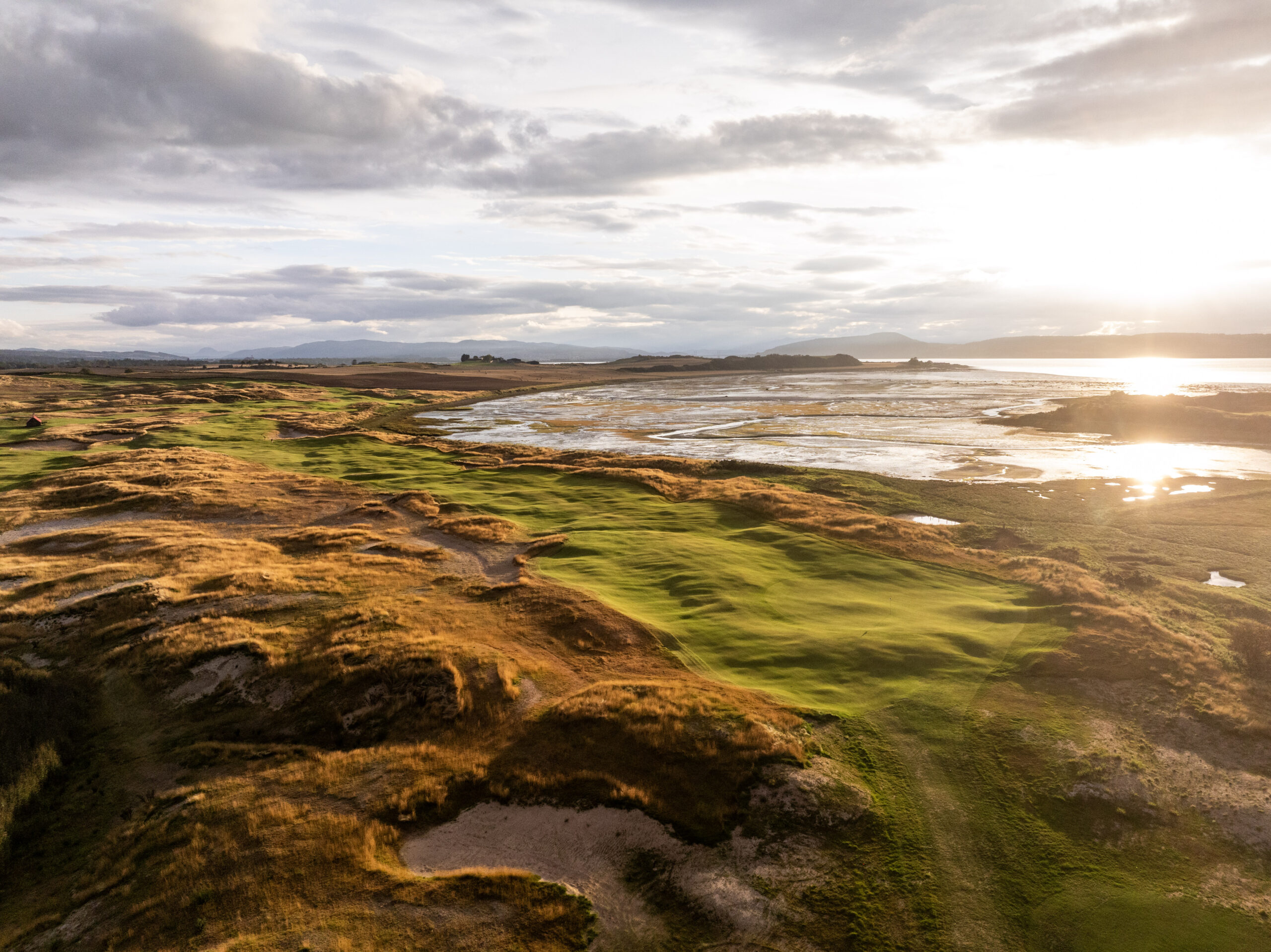
2025 marked an exciting year for two of the most talked-about destinations in Scotland. This summer, two new courses opened for preview play at revered venues in the Highlands and Aberdeen: Cabot Highlands’ Old Petty, designed by Tom Doak & Clyde Johnson, and Trump International’s North Sea Links, designed by Martin Hawtree and assisted by Christine Fraser & Christian Lundin.
So we sat down with Jack Sallis, founder of Halcyon Golf Travel, who has played them both, to hear his take on how they compare, what sets them apart, and what visiting golfers can expect.
Jack, for those who don’t know you, can you tell us what you do?
I’m the founder of Halcyon Golf Travel. We’re a specialist golf tour operator covering the UK and Ireland. My job takes me across Scotland, Ireland, and England throughout the summer, visiting and researching courses for clients, and occasionally playing them too. I’m a lucky boy.
When did you first play the new courses at Trump International and Cabot Highlands?
I played both during the last week of August 2025, pretty much back-to-back. It was the perfect chance to compare them while they were both fresh.
Before these new additions, both sites already had existing courses. Which did you prefer?
Tough call. I’d say Castle Stuart (the old course at Cabot Highlands) probably edged it for me. It’s slightly more playable and just a bit easier to enjoy, whereas Trump International is a sterner test. Both are modern links courses with huge visuals and generous landing zones, so unless the wind is howling, they’re great fun.
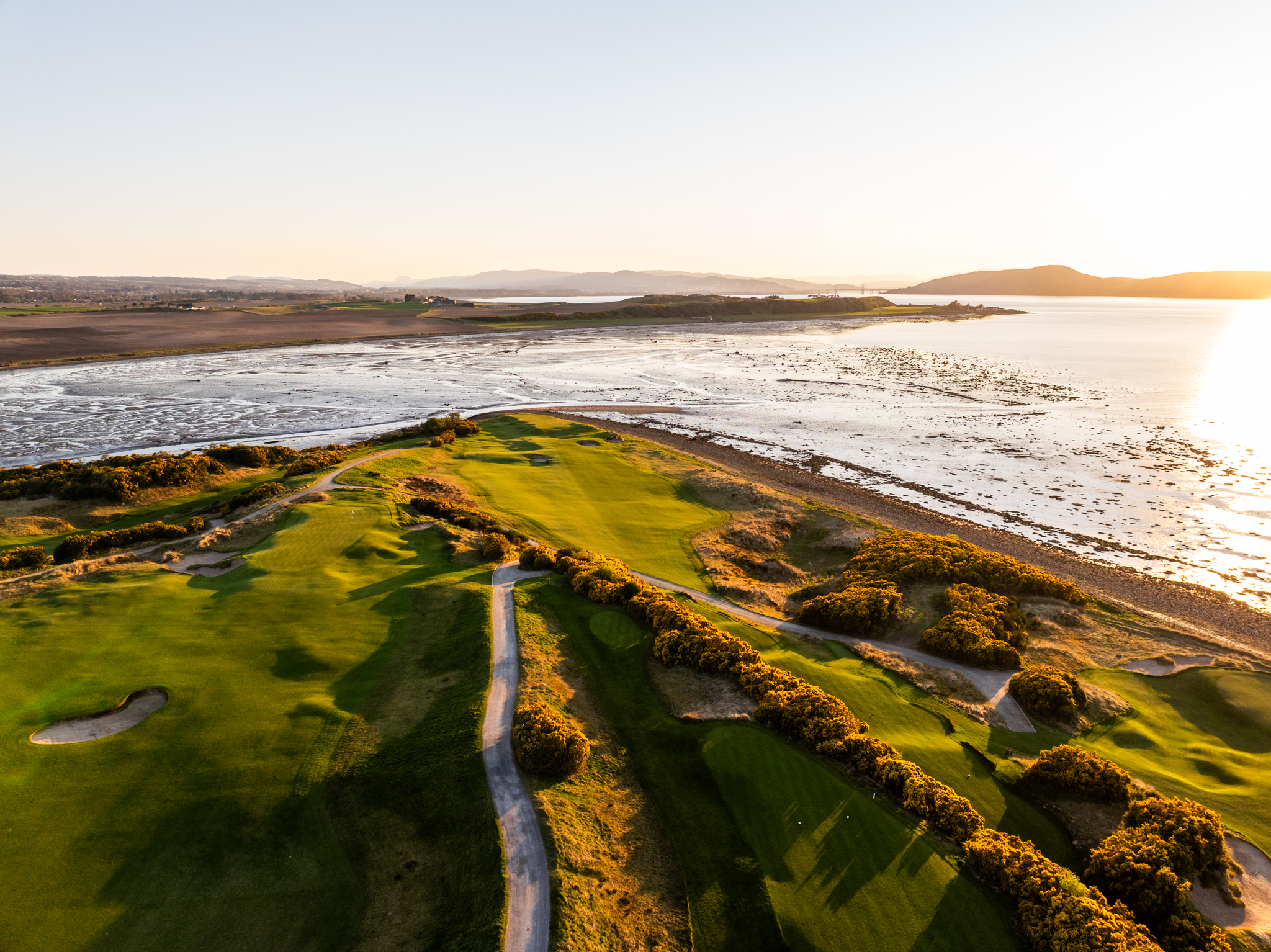
Trump International has a reputation as a dramatic ‘driving course.’ Does that carry into the new design?
Yes, you really need to drive it well. The original course is framed by towering dunes on almost every hole, with bunkers scattered across different yardages, so you can’t just hit it past the trouble. The new course keeps that character for nine holes, but the other nine are very different – more water, no greenside bunkers on the front nine, and these enormous greens with shaved run-offs. It’s a wild mix of styles. When those greens firm up, it’ll be fascinating to see how it plays.
How does Cabot Highlands’ new course, Old Petty, compare to Castle Stuart?
It’s a very different experience. The new course is 80% inland, with trees, waste areas, and some seriously contoured greens. It’s more about approach play, picking your angles and side of the hole. It’s also a gentler walk, less about sea views and more about shot-making.
Contoured greens have become a hallmark of modern design. What’s your take on that trend?
It’s definitely a defining feature of new golf architecture. At Trump, it’s used cleverly. The shaved run-offs and bowls make it playable for all abilities. A scratch golfer might get frustrated putting from 50 feet all day, but a beginner can chip or putt around the greens and still enjoy it. It’s variety without punishment.
What similarities do the two new courses share?
Both rely on their greens as the main defence, and both mix hole lengths really well, from strong par fours to drivable risk-reward holes. There’s a balance between challenge and fun that works for different handicaps. If they want to trick it up, they really can. It gives the greenkeepers, or whoever is setting up the course for the day, more choices and more options to be nice or nasty.
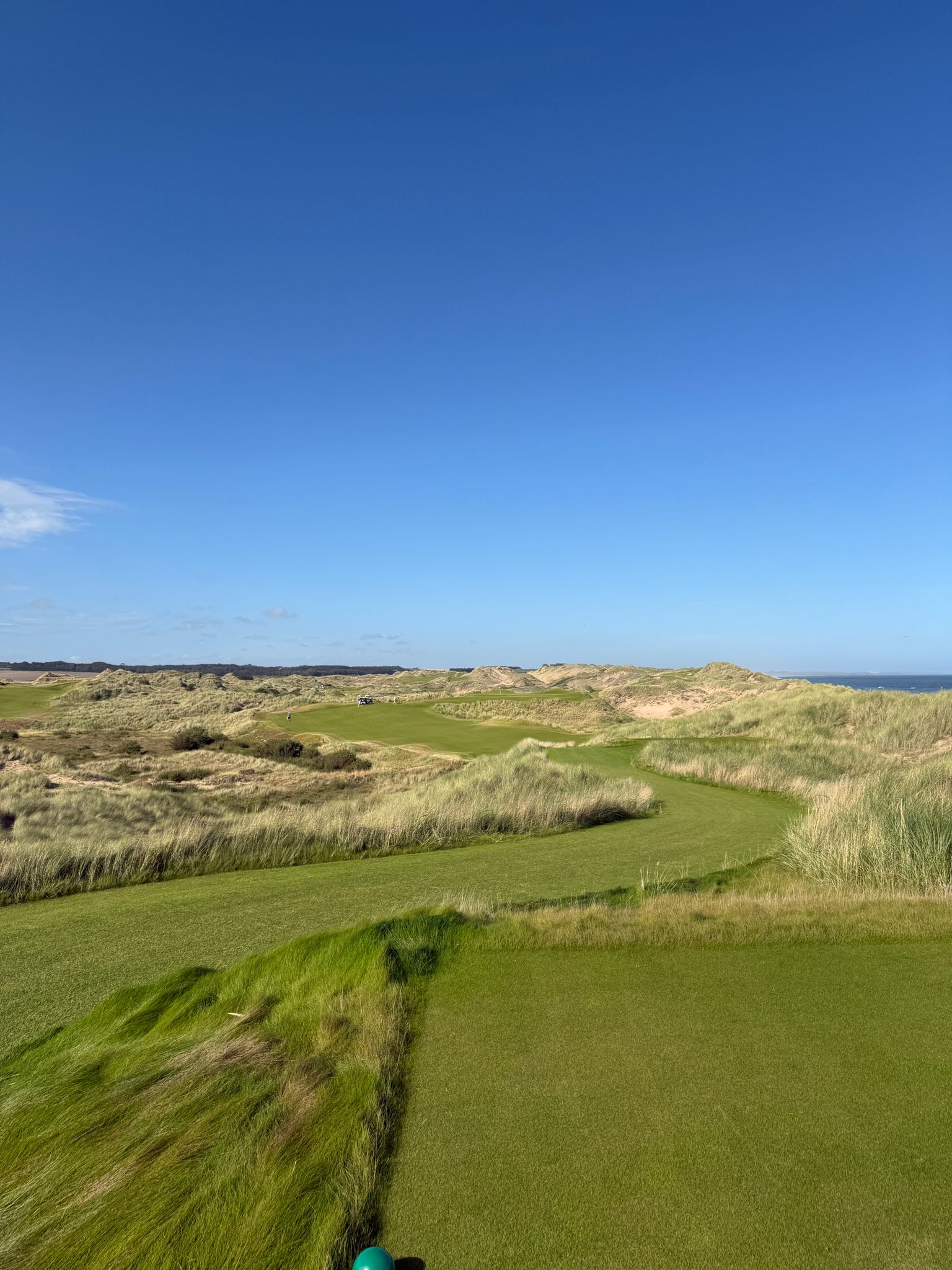
How do your clients from the U.S. respond to these new “modern links” compared with the traditional ones like Royal Dornoch?
It’s split. Dornoch is almost a modern course by accident, it’s perfectly routed and uses the land beautifully. But some U.S. golfers prefer the modern layouts: pristine, dramatic, and a bit more manicured. Others come specifically for the traditional, wind-swept, understated links. It depends on whether they’re here for the history or the spectacle.
Tom Doak designed Old Petty. How does its routing differ from Trump’s new course?
Trump’s new course feels like two completely different nines; the front nine has lakes and no greenside bunkers, while the back nine returns to classic links golf. Old Petty, on the other hand, loops around in one flowing circuit. You pass the castle, head inland, and finish with sea views. It’s a seamless journey – classic Doak routing.
If a great golf course is like an album, some have standout “hits” while others are strong all the way through. How do these two compare?
Trump is a great album with hits. Old Petty builds slowly and ends with five absolute bangers. From the blind uphill hole onwards, every hole feels like a highlight; great match play golf, full of character. For example, at Old Petty, you’ve got that half-par downhill par four, then the long par three with the ocean in the background, and then the reachable par five 15th.
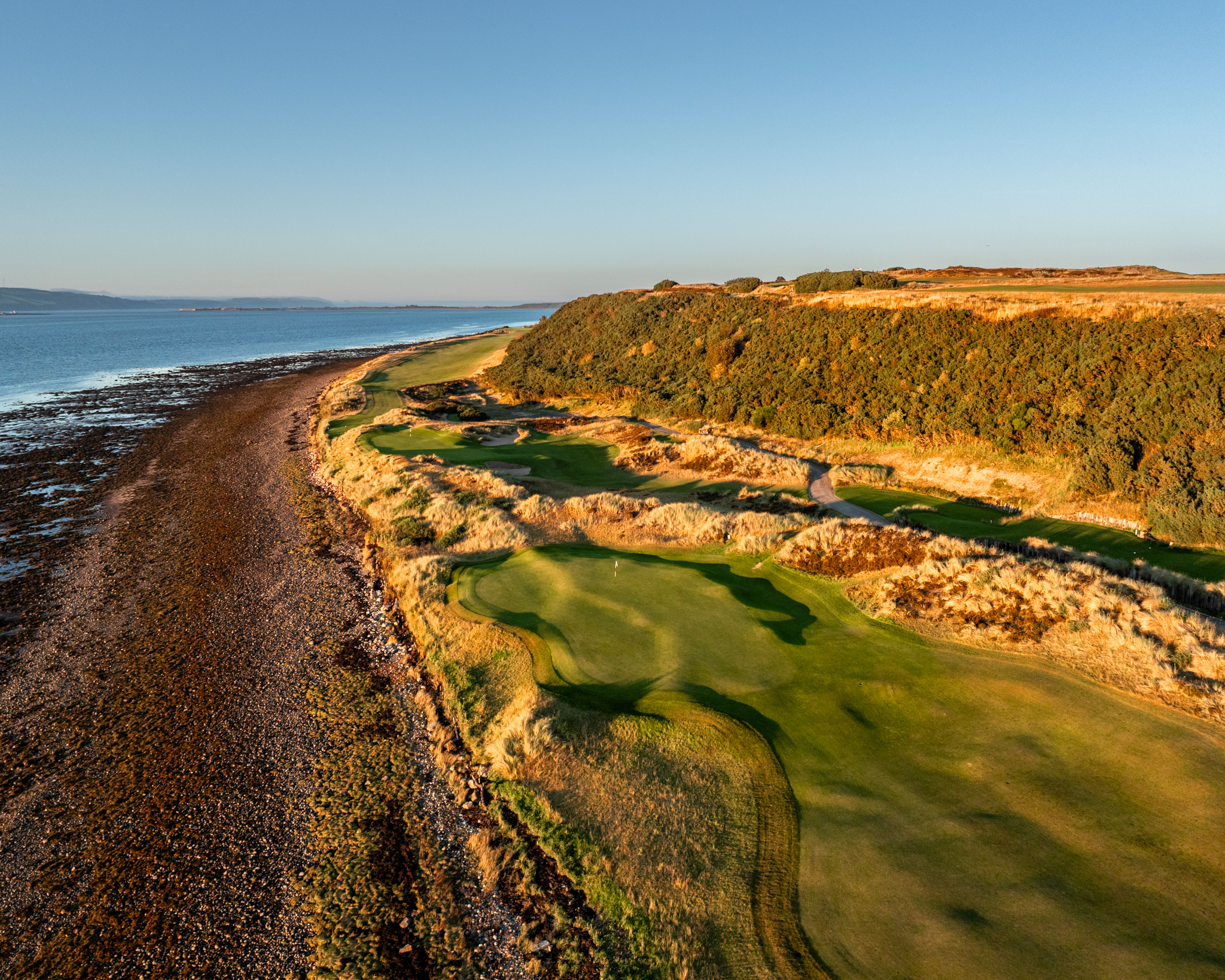
You mentioned playability earlier. How do both courses cater for different standards of golfer?
They’re both playable for high handicaps. A scratch player will prefer Trump because it tests every part of your game. The variety of tees means you can make it as tough or as fun as you want. I’d always recommend playing from the forward tees, it really brings the course alive.
It’s proper risk-reward, but you could go on an incredible run. That might just be a personal preference, but I don’t like to go out there and get annihilated by the course hitting three iron into every green. I want to be in control of how I play it and not be forced into just hitting driver long iron. Other people like to go out and be tested, play the hardest golf course in the world, and see how they fare. But that’s not fun for me.
Trump and Cabot are very different brands. How do their visitor experiences compare?
They’re both North American operations and both get service spot on; great caddies, brilliant halfway houses, everything clearly signposted. Trump feels a bit more established, but Cabot has the edge for me: the views from the clubhouse are stunning and the Old Petty logo is superb.
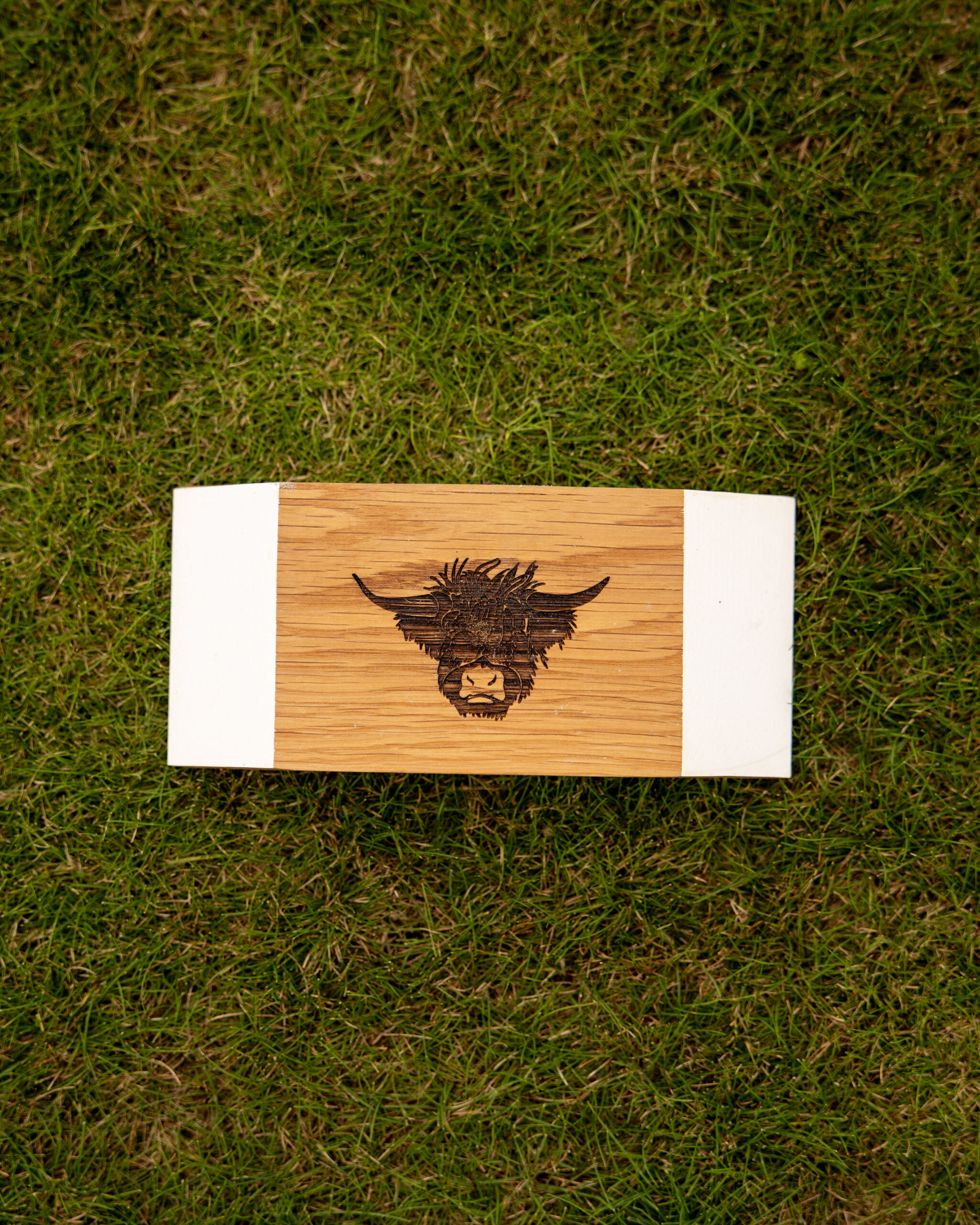
Any memorable touches or clever features that stood out at either venue?
The halfway house at Trump’s new course is one of the best anywhere – proper food, Sky TV, and shelter when the weather turns. Cabot’s new one looks great too, with that bright red roof, though it comes early in the round.
Design-wise, I love how both use multiple tee boxes. It essentially creates several different golf courses in one. Christine Fraser’s influence on playability really shows.
There were a couple of holes at Old Petty that confused me initially. One of them I’ve got my head around now, and I actually really like it, is the eighth, which is the par five up the hill with the castle in the background. It’s very reachable, but to go for it in two, it’s a completely blind approach shot, only made blind because they’ve put a waste area in the middle of the fairway. The first time I played it, I just thought, why?
Incorporating blind shots in modern course designs is risky business, I think. But it all made sense afterwards. I didn’t have to go for it in two. If I played it in regulation, I could see the target and every shot. Having to pick a point on the castle in the background as your line for the second shot is really smart. It’s a memorable part of the round and adds a risk element to what could otherwise just be a short, reachable par five. I actually quite like it.
Another of my favourite moments on Old Petty is a semi-blind shot into 15, a par five. Off the tee, if you hit it further than 240, you’re going over the corner into a blind bit of fairway, which is very intimidating. But if you hit a good one, the green is easily reachable in two and you can just see the top of the flag — then the green feeds in from the right.
You hit a shot you think is great, but you don’t know where it is until you get right up to the green. You always find yourself walking twice as fast up to the approach shot, just to see – am I closer than my mate? Am I going to win the skin?
That’s a great example of where blind shots can be really fun.
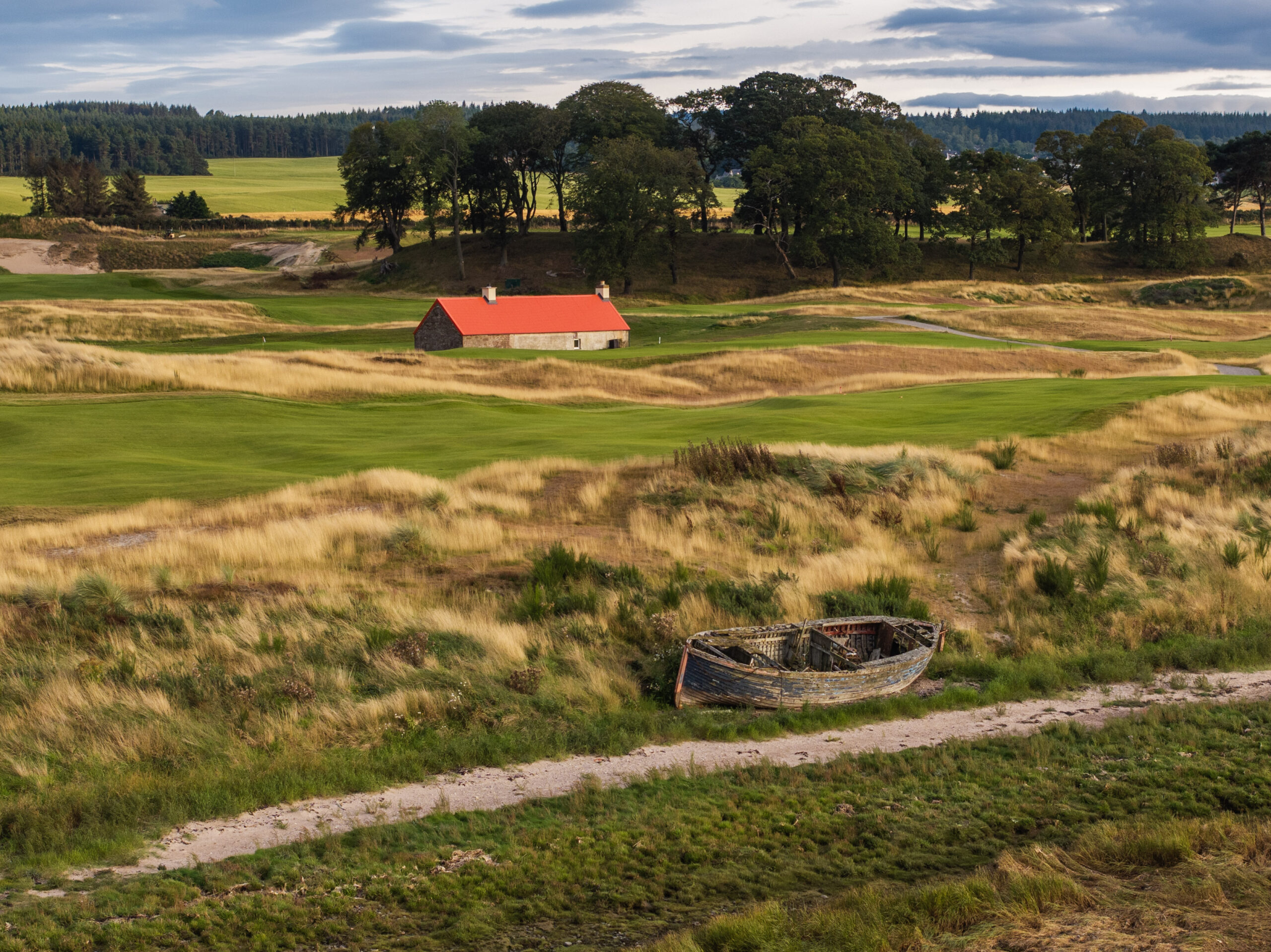
Trump has called it “the greatest 36 holes in golf.” I’m not going to ask you to confirm or deny that, Jack, but which is the ‘greater’ 36-hole day in golf?
Sunningdale! Haha. No, right now, probably Trump. But in a few years, once Old Petty matures, Cabot could take that crown. Trump’s conditioning is incredible already – they’ve moved earth to create these enormous dunes and it looks amazing. Cabot’s still bedding in, but it’ll develop into a more authentic, fast-running links.
And finally — how do you see the Highlands and Aberdeen stacking up against the better-known Scottish regions?
Massively underrated. Genuine world-class golf up there now, especially with Old Petty and North Sea Links added to the mix. You’ve also got hidden gems like Golspie and Brora, great food, whisky, castles – it’s pure Scotland. The landscapes are breathtaking, maybe even more dramatic than Fife or Ayrshire.
Interview by Sam at Cookie Jar Golf.


